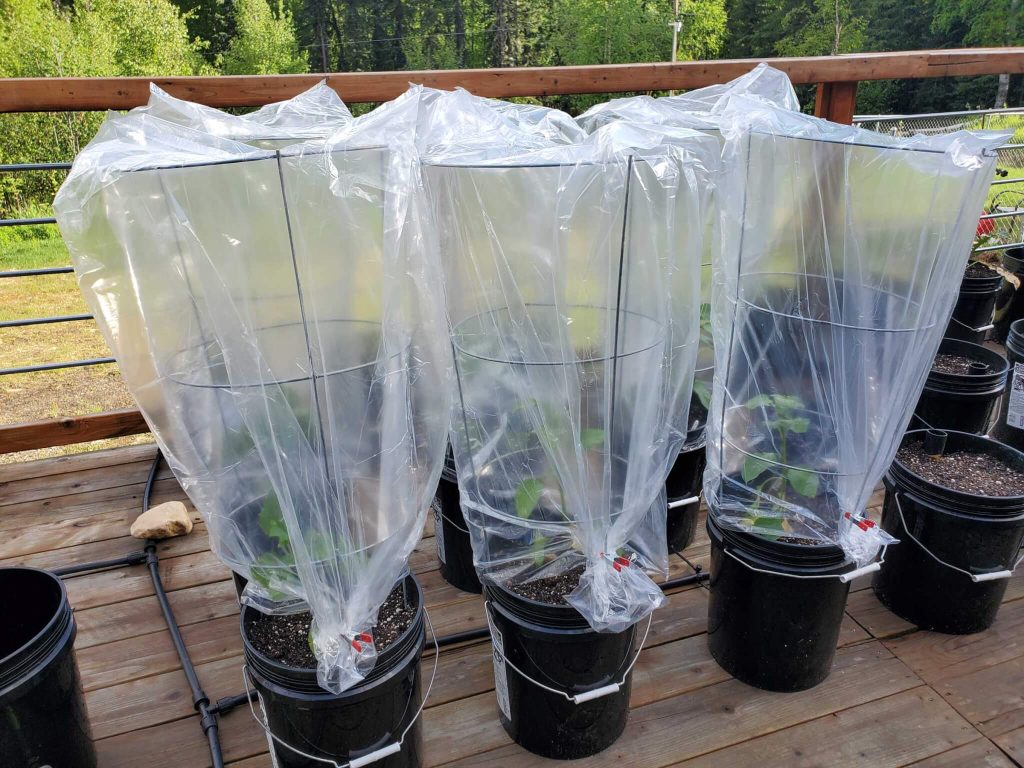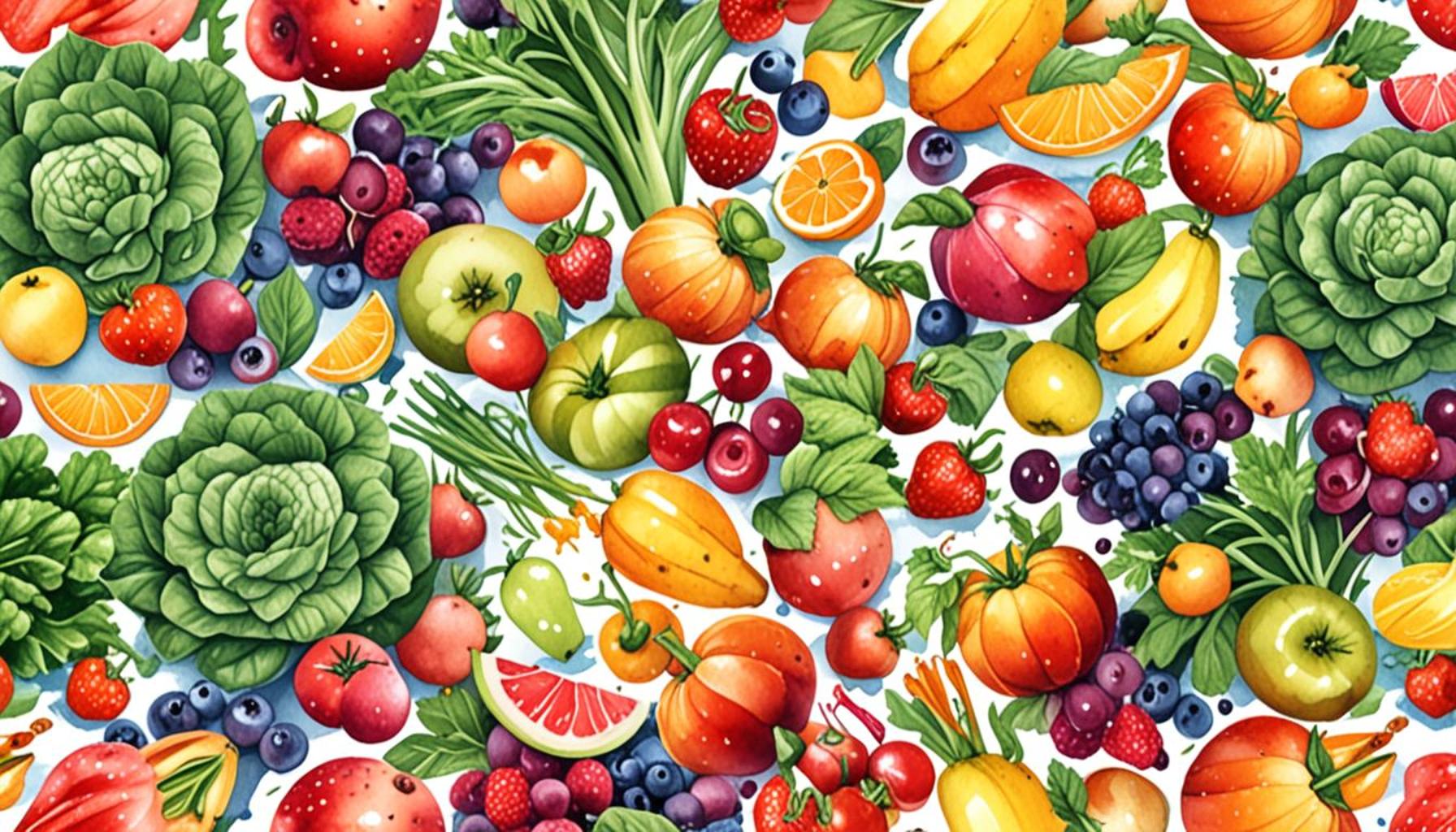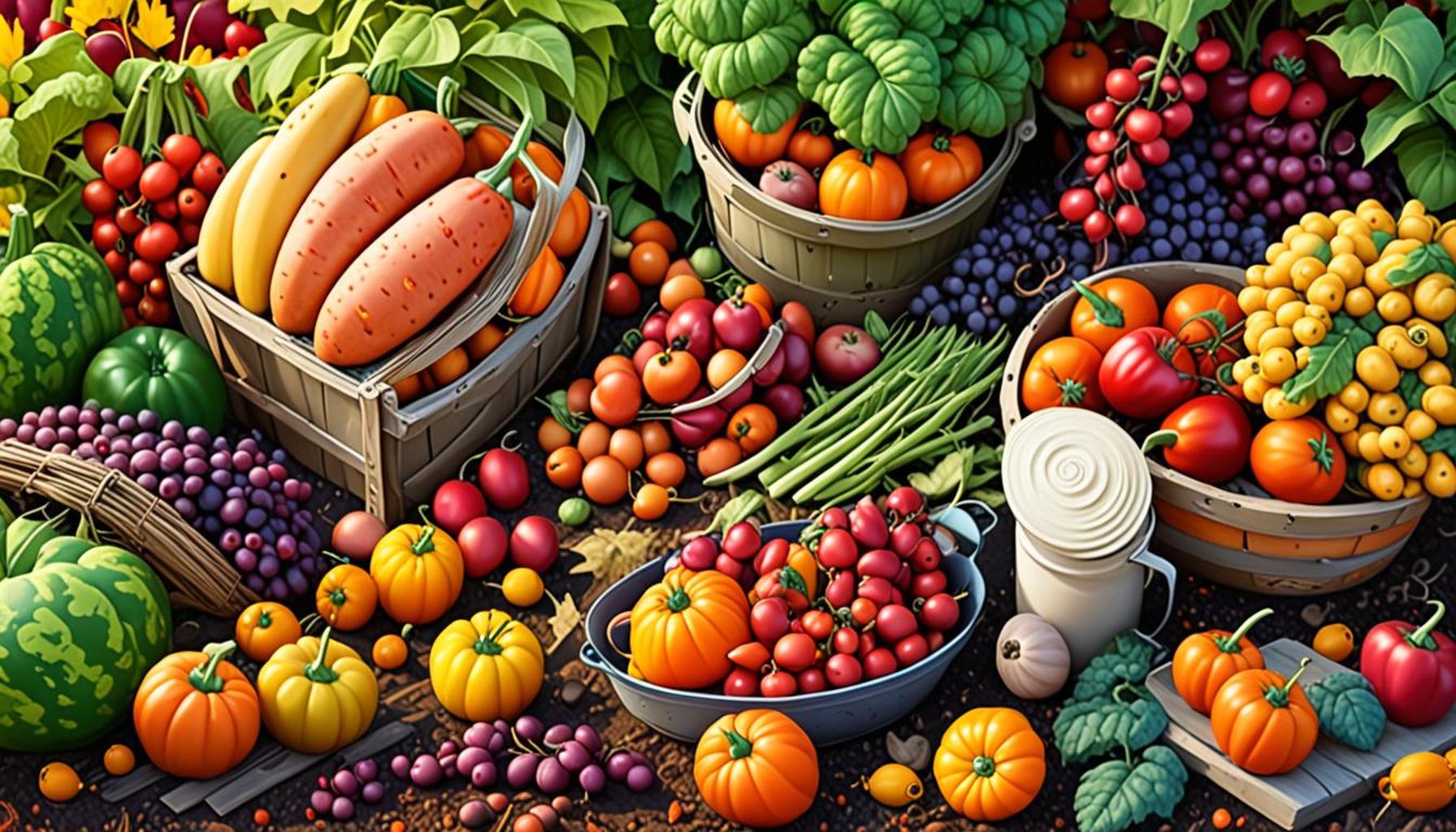How Climate Conditions Affect Harvest Timing in Home Gardening

The Role of Climate in Home Gardening Success
Home gardening is not just an enjoyable hobby; it can also be a key component of sustainable living, providing fresh produce and reducing the carbon footprint associated with store-bought foods. However, the success of these gardening endeavors is highly contingent upon a myriad of climate conditions. From temperature to moisture and sunlight, each element plays a pivotal role. Understanding how these factors interact will allow gardeners to make informed decisions that can lead to more fruitful outcomes.
- Temperature: Each plant species has a preferred temperature range for optimal growth. For example, cool-season crops like lettuce and peas flourish in cooler temperatures, while heat-loving plants such as tomatoes and peppers prefer warmer conditions. It is crucial for gardeners to monitor temperature fluctuations, as sudden drops or spikes can affect germination rates and quality. Investing in a simple soil thermometer can be a wise move for any gardener aiming to maximize productivity.
- Moisture: The necessity of proper moisture levels cannot be overstated. Soil that is too dry leads to stunted growth, while overly saturated soil can cause root rot. Gardeners should closely track rainfall and understand the humidity levels in their region. For instance, areas like the southeastern United States, which experience increased humidity, may require different irrigation techniques than drier regions like the Southwest. Utilizing rain gauges and soil moisture sensors helps maintain an ideal watering schedule.
- Sunlight: The amount of sunlight your garden receives is fundamental for photosynthesis, which fuels plant growth. Most vegetables require at least 6 to 8 hours of direct sunlight daily. Identifying different parts of your garden for varying light exposure can aid in strategic planting, enabling less sun-loving plants, such as spinach and kale, to thrive in shaded areas while allowing sun-hungry species ample light.
In the diverse landscape of the United States, gardeners are met with unique challenges and opportunities. Regions characterized by early autumn frosts may hinder the ability to plant fall crops, while those in warmer locales can cultivate crops well into the winter months, depending on their microclimate. For instance, coastal gardens in California enjoy a mild Mediterranean climate, enabling a year-round growing season, while gardeners in upstate New York face a much shorter window for outdoor activities.
Crucial Factors for Optimal Gardening
To navigate these climatic challenges successfully, gardening enthusiasts should consider several critical factors:
- Frost Dates: Familiarity with the local frost dates—both last spring frost and first fall frost—can significantly influence your planting schedule. A simple online search can provide this essential data for your specific area.
- Seasonal Variance: Understanding how seasonal changes impact plant growth is vital for effective crop rotation. A gardener should plan early spring plantings that can withstand cooler temperatures, while saving delicate varieties for when temperatures rise.
- Microclimates: Each property can have its own unique climate characteristics influenced by factors like elevation, wind patterns, and proximity to water bodies. Identifying these microclimates allows for more strategically placed gardens that can capitalize on specific conditions, leading to increased success.
By honing in on these vital climate-related aspects, home gardeners can optimize their practices, align their planting and harvesting schedules, and ultimately ensure a bountiful yield. This attention to detail not only fosters an enduring connection to nature but also leads to healthier eating and a sustainable lifestyle.
DISCOVER MORE: Click here for safe DIY pest solutions

Understanding Harvest Timing and Climate Dynamics
The delicate balance between climate conditions and the timing of harvests is an essential consideration for any home gardener. The relationship between the environment and plant growth cycles is a complex one, as the right conditions can lead to a fruitful yield, while unfavorable ones can spell disaster. As gardeners strive to produce their best crops, they must pay close attention to several climatic factors that dictate when and how to harvest.
- Temperature and Harvest Readiness: As discussed earlier, temperature significantly influences plant growth, but it also plays a crucial role in determining when a crop is ready for harvest. Each vegetable variety possesses a unique maturation temperature range, meaning that prolonged periods of high or low temperatures can delay or hasten harvest timelines. For instance, tomatoes typically require consistent warm temperatures to ripen, while broccoli prefers cooler weather for florets to develop properly. Understanding these temperature preferences is vital for ascertaining the ideal harvesting window.
- Day Length and Photoperiod: The concept of day length, or photoperiod, is another climate-related component that impacts harvest timing. Some plants, like spinach and lettuce, respond favorably to longer daylight hours and will bolt (flower) if subjected to prolonged light, ultimately making them unharvestable. Conversely, others like onions require specific light durations to reach maturity. By keeping an eye on the length of days and adjusting planting schedules accordingly, gardeners can optimize yield and quality.
- Moisture Levels and Crop Health: The relationship between moisture levels and harvest timing cannot be understated. Crops subjected to drought conditions may mature more slowly, while those exposed to excessive moisture can experience rapid growth but suffer from diseases that negatively affect quality. For example, root vegetables like carrots and beets require consistent moisture to develop fully, meaning that gardeners must ensure adequate watering practices align with rainfall forecasts. Awareness of local climate variability will help inform irrigation strategies that ensure a successful harvest.
Harvest timing is further complicated by regional variations in climate. For example, gardeners in the Pacific Northwest may contend with abundant rainfall, affecting the harvest schedule of crops like beans and potatoes, which might develop rot in overly wet conditions. In contrast, gardeners in arid regions like Arizona must be vigilant in managing water usage while still ensuring their plants get enough moisture to thrive. Understanding local climate patterns is essential for maximizing output and preventing crop loss.
Strategies for Monitoring Climate Impacts
To meet the challenges posed by varying climate conditions, home gardeners can adopt several practical strategies:
- Utilize Climate Apps: Leverage technology by using gardening apps and weather trackers to stay updated on local conditions, including temperature fluctuations and precipitation levels. These tools can help inform planting and harvesting schedules by providing real-time data.
- Record Keeping: Maintaining a garden journal that details sowing dates, temperatures, and moisture levels can reveal valuable insights over time. This method allows gardeners to adjust their practices based on historical climate data and ultimately improve harvesting outcomes.
- Engage with Local Gardening Communities: Participating in local gardening clubs or online forums can offer further insights and region-specific advice. Experienced gardeners within these communities can provide invaluable guidance on how to navigate local climate challenges effectively.
By understanding and effectively responding to the impact of climate conditions on harvest timing, home gardeners can enhance their chances of cultivating a successful and sustainable garden. The intricate dance of nature and gardening is not just about what to plant but also when to harvest, creating a deeper connection between gardeners and the environment.
| Category | Impact on Harvest Timing |
|---|---|
| Temperature Variations | Higher temperatures may accelerate crop maturity, while lower temperatures can delay the ripening process, impacting the timing of harvest. |
| Precipitation Patterns | Inconsistent rainfall can cause water stress, leading to either premature or delayed harvesting, as plants struggle to reach optimal sizes and taste. |
| Sunlight Availability | Changes in day length and sunlight intensity can significantly impact photosynthesis, altering the timing of flower and fruit development. |
| Frost Dates | Last-minute frost events can severely impact harvest timing by causing damage to crops that are near maturity. |
Understanding these factors is crucial for every home gardener. By adjusting planting schedules based on specific climatic conditions, gardeners can optimize their harvests, ensuring that their produce reaches full flavor and nutritional potential. It’s important to remain attentive to local climate patterns, as shifting weather trends can lead to significant changes in gardening practices. Regularly reviewing weather forecasts and understanding historical climate data can provide valuable insights for effective garden management and successful harvest outcomes.
DISCOVER MORE: Click here to learn about garden pest life cycles
Harnessing Climate Knowledge for Optimal Harvest Timing
As global climate change continues to evolve, the expected variability in weather patterns may pose increased challenges for home gardeners. Understanding how changes in climate conditions affect harvest timing becomes increasingly essential, as gardeners strive not only for productivity but also for resilience against climatic unpredictabilities.
- Impact of Climate Trends: Long-term climate trends, such as rising temperatures and shifts in precipitation patterns, can disrupt traditional growing seasons. For instance, a prolonged hot spell in spring could accelerate the growth cycle of early crops, leading to premature flowering or bolting. Crops like peas and lettuce, which thrive in cooler temperatures, may well succumb to heat stress, resulting in diminished yields. Gardeners must adapt by closely monitoring seasonal changes and making necessary adjustments in crop selection and planting dates.
- Frost Dates and Seasonal Shifts: The timing of the last frost date in spring and the first frost date in autumn are pivotal for determining a gardener’s planting and harvesting schedule. With climate fluctuations causing these dates to shift, gardeners must stay informed. For example, if your area experiences a delayed frost in spring, it may provide an unexpected opportunity to extend the growing season for frost-sensitive crops such as tomatoes and peppers. Conversely, an earlier onset of fall frost may necessitate timely harvesting of crops like cucumbers and squash to avoid loss.
- Pest and Disease Pressure: Climate conditions also influence pest and disease dynamics, which in turn may affect when or how much harvest can be achieved. Warmer temperatures often lead to increased insect activity, meaning pests such as aphids or beetles may reproduce more rapidly, causing significant damage to crops if not managed. Awareness of local pest prevalence can aid in timely interventions, ensuring that vegetables like cabbage and carrots are harvested at peak quality, before infestation occurs.
In addition, climate variability may increase the prevalence of diseases, particularly fungal infections favored by humid conditions. Strategies such as crop rotation and selecting disease-resistant varieties can help mitigate these risks. Understanding the relationship between climate and pest dynamics is crucial for optimizing harvest timing and maximizing yield consistency.
Plant Hardiness Zones and Selection
The USDA Plant Hardiness Zone Map is an invaluable resource for gardeners to understand what plants can best withstand local climate conditions. Each zone reflects average annual minimum winter temperatures, guiding gardeners in their planting decisions. Home gardeners should select crops that are well-adapted to their specific zone, ensuring that they can mature fully before harsher conditions set in. For example, hardy crops like kale and brussels sprouts thrive in cooler zones, while subtropical crops like sweet potatoes flourish in warmer areas.
Additionally, experimenting with heirloom varieties may offer some surprise advantages. These older cultivars often possess better adaptability to local climate quirks due to their historical interactions with regional environments. By diversifying crop selection through heirloom varieties, gardeners can hedge their bets against potential harvest disruptions caused by climate extremes.
Ultimately, understanding and incorporating climate patterns into gardening practices can significantly influence harvest timing. With vigilance, adaptability, and strategic planning, home gardeners can enhance their success and cultivate flourishing gardens despite the whims of ever-changing climate conditions.
DON’T MISS OUT: Click here to discover easy-care indoor plants that purify your air
Conclusion: Embracing Climate Adaptability for Successful Harvests
In conclusion, the intricate interplay between climate conditions and harvest timing is a vital consideration for home gardeners aiming for thriving gardens. As we witness the ongoing impacts of climate change—from shifting frost dates to unpredictable weather patterns—it becomes increasingly important for gardeners to remain vigilant and adaptable. Knowledge is power, and by understanding how factors such as temperature fluctuations and soil moisture levels affect crop growth, gardeners can enhance their harvest outcomes.
Moreover, by becoming attuned to local climate trends and actively using resources like the USDA Plant Hardiness Zone Map, individuals can make informed decisions on what crops to plant and when. This foresight not only allows for maximization of yields but also ensures crops are harvested at their peak quality, reducing the risk of losses due to climatic pressures. The cultivation of resilient varieties—especially hardy heirlooms—can offer a promising path amidst environmental uncertainties.
Ultimately, as home gardeners strive to cultivate bountiful harvests, embracing a flexible approach grounded in ongoing climate research will pave the way for agricultural resilience. It becomes evident that successful gardening in the face of changing climate conditions requires not only adaptation but also a willingness to learn and respond to the evolving environment. By equipping themselves with knowledge and innovative strategies, home gardeners are well-positioned to flourish, creating a sustainable legacy for future generations.



